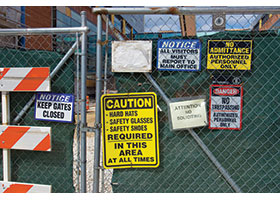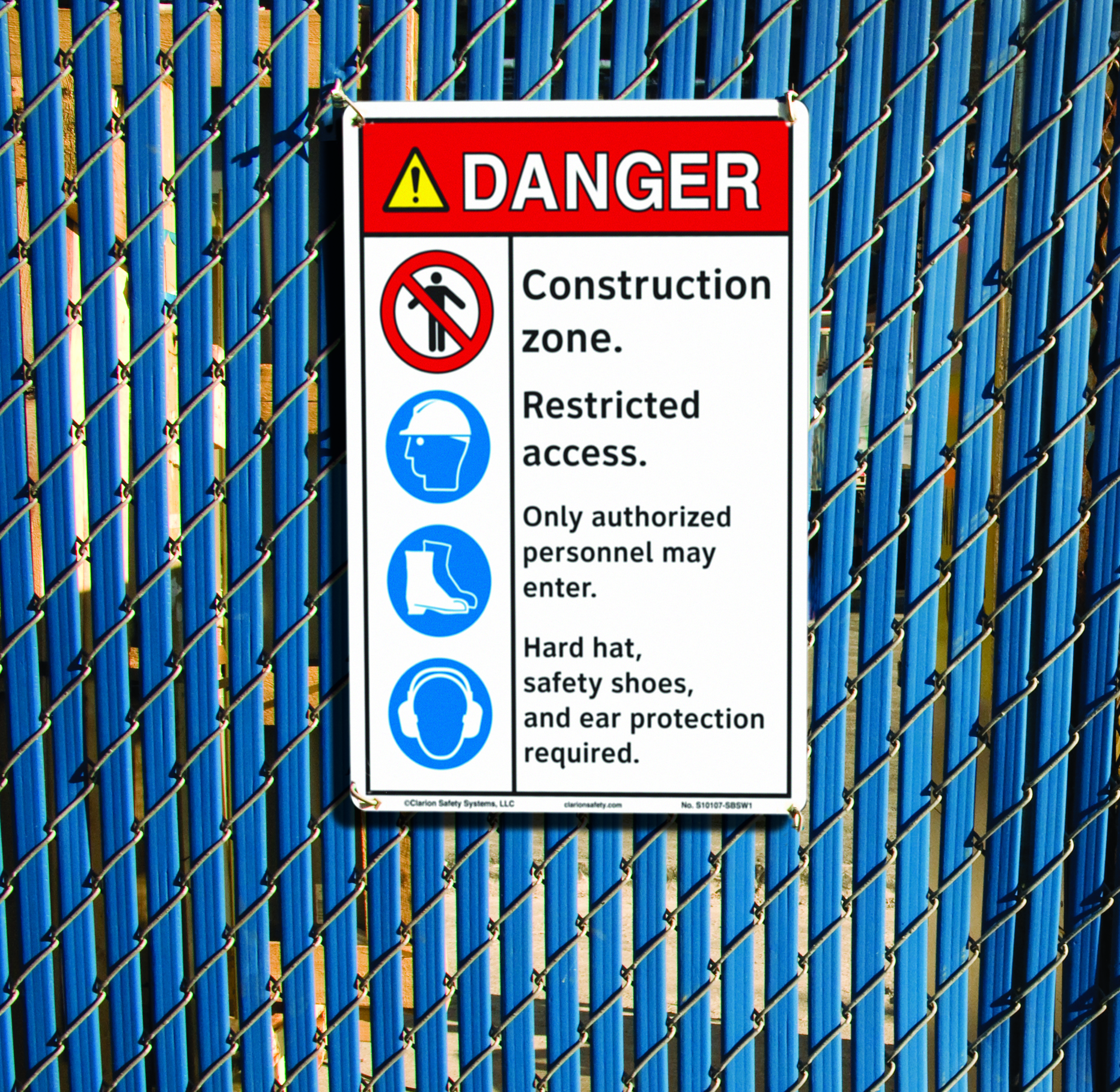Workplace Signage: A Picture is Worth a Thousand Words
Posted by Geoffrey Peckham | 8th Feb 2016

Picture yourself as a subcontracted construction worker showing up to the worksite the first day on the job. You put on your hard hat as you go through the gated entrance to the site and begin your work. What is the likelihood that you took the time needed to read all of the safety signs posted at the entrance? My guess is that you would have walked right past them, most likely not even noticing them. And that is the problem with word-message based signage. People don’t see them.
Advertisers have known this for years. If you want people to notice your brand of cereal on the grocery store shelf, it had better have an attention-getting picture on it. People see images; they need to read words. The goal of all safety signage is communication, but the vast majority of the facility safety signs currently installed in the U.S. are way behind the times, reflecting best practices in safety signing circa 1941!
Human factors psychologists will tell you that the brain takes in words and images differently. As I understand it, words are processed by the cerebral cortex where the word’s letters are recognized and organized into the word and the word’s possible meanings are recalled. For multi-word messages, your brain puts the words together in context with one another and the context to arrive at a meaning that makes sense (or not). All of this takes time and a degree of effort – and, obviously, the ability to read and understand the language to the level of the words being used.

In contrast, images (like safety symbols) are processed by the brain’s limbic system – the part of the brain that creates memories and emotion and that’s responsible for motivating us to act. Sometimes the meaning of an image, like words, needs to have been taught so a person can understand it the first time they come in contact with it. That’s why many of Clarion’s signs and labels include words – to teach and reinforce the meaning of the symbols used.
At other times, though, safety symbols can be intuitively understood, especially when seen in a specific context. The important thing, here, is that whether the meaning of a safety symbol is taught or is intuitively understood, the communication that results is incredibly quick. In a passing glance, we can notice and take in images and understand their meaning. And THIS is why Clarion safety signs and labels are so much more effective at communicating risk and modifying behavior. In comparison, word-only safety signs and labels don’t stand a chance, especially with today’s more visually oriented younger generations. When it comes to risk communication, truly, a picture is worth a thousand words!
Geoffrey Peckham
CEO, Clarion Safety Systems

This blog is part of a series of regular posts from our CEO, Geoffrey Peckham, to share his insight. Geoffrey serves as chair of the ANSI Z535 Committee for Safety Signs and Colors and chair of the U.S. TAG to ISO/TC 145 – Graphical Symbols. He has also been selected as a member of the U.S. TAG to ISO/PC 283, an ISO committee writing a new standard, ISO 45001 Occupational Health and Safety Management Systems, which will, when finished, define global best practices for workplace safety. In addition, he is an active member of many industry-specific standards committees related to safety signs and labels for buildings, ships, machinery and products.